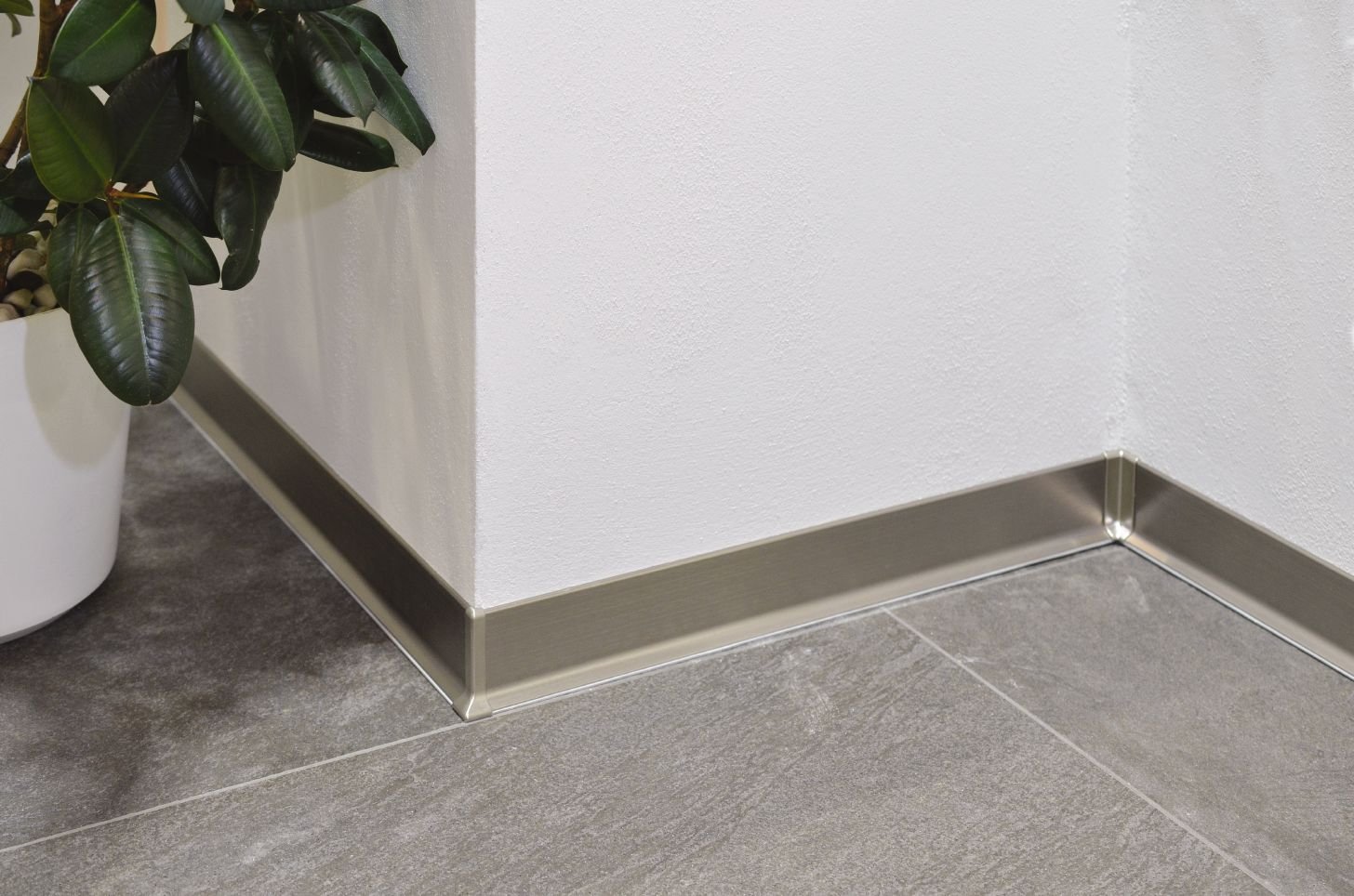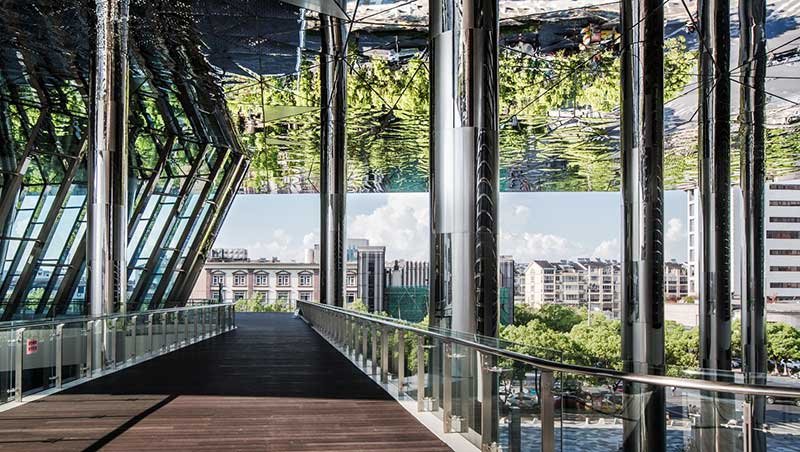Most Popular Stainless Steel Trims in 2020–2025: What’s in Style Now
Table of Contents
Stainless steel decorative tile trim, as a material with both practicality and decorative properties, has become increasingly important in the field of interior design.
In the past five years (2020 – 2025), its application and development in interior design has shown many significant changes, which not only reflect the progress of the material itself, but also reflect the evolution of interior design trends.
Innovations in Materials and Processes
Diversification of Surface Treatment Technology
The surface treatment technology of stainless steel decorative profiles has made remarkable progress in the past five years. In addition to the traditional mirror, brushed and frosted effects, there are more innovative surface treatment processes. For e.g., etched or embossed stainless steel can add a unique visual effect to interior spaces.
This process not only enhances the aesthetics of stainless steel, but also enhances its reflective properties, allowing it to complement other materials such as micro-cement, concrete and stone in monochromatic spaces, creating a rich visual layering.
Improvement of Environmental Performance
With the enhancement of environmental awareness, the production process of stainless steel edge trims also pays more attention to environmental protection. Modern production processes not only reduce the emission of pollutants in the production process, but also improve the recyclability of materials. This makes the stainless steel decorative lines to meet the needs of interior design, but also in line with the concept of sustainable development.
The Evolution of Design Trends
From Industrial to Modern Minimal
Over the past few years, the style of stainless steel U profiles application has gradually shifted from industrial to modern minimalist. Industrial wind emphasizes the original texture of the material and rough style, while the modern minimalist style pays more attention to clean lines and exquisite details.
Stainless steel tile trims can easily adapt to this style change by virtue of its versatile shape and surface treatment process. For e.g., in modern minimalist interior design, stainless steel lines are often used to outline walls, ceilings and floors, creating a clean and layered space.
Fusion with Other Materials
The application of stainless steel tile profiles fused with other materials has also become more widespread over the past five years. Instead of using stainless steel alone, designers are combining it with materials such as wood, stone and glass to create a more visually striking and texturally contrasting effect.
For e.g., in some high-end residential and commercial spaces, the use of etal tile edging strips in conjunction with natural stone not only enhances the luxury of the space, but also increases the modernity of the design.

Expansion of Application Scenes
Residential Space
In residential design, the application scenes of brushed stainless steel tile edge trims continue to expand. In addition to the traditional wall and ceiling decoration, it is now widely used in skirting, stair handrails, door and window borders and other parts.
For e.g., stainless steel trims for tile edge protection with non-slip texture are used for stair treads, which both enhance safety and increase aesthetics. In addition, stainless steel lines are also used in kitchens and bathrooms as a finishing touch for tile seams, hiding gaps while enhancing the overall sense of neatness.
Commercial Space
In commercial space, the application of PVD color stainless steel tile borders is more diversified.
For e.g., in restaurants and cafes, anti-rust stainless steel edge trims are used in the decoration of bars, dining tables and lamps to create a modern and stylish atmosphere. In retail spaces, stainless steel edge strips are used in the design of display racks and checkout counters, which not only enhances the visual effect of the space, but also strengthens the brand’s modern sense.
Public Space
In public spaces, such as hotel lobbies, airport terminals and museums, stainless steel tile trims for wall corner are used to separate and decorate large spaces.
For e.g., in some hotel lobbies, stainless steel lines are used for ceiling decoration, dividing different functional areas while adding a sense of hierarchy to the space. In museums, matte finish stainless steel tile trims are used for the decoration of display cabinets and walls, enhancing the modern and artistic sense of the space.
Market Demand and Industry Trends
Market Demand Growth
As people’s expectations for the quality of their living and working environments continue to rise, market demand for stainless steel decorative moldings has continued to grow over the past five years.
According to industry reports, by 2025, China’s production capacity for stainless steel decorative profiles will reach 3.5 million tons, with output reaching 3.15 million tons, a capacity utilization rate of 90%, and demand reaching 3.3 million tons. This demand is expected to continue to grow in the coming years.
Evolution of Industry Trends
The stainless steel tile finishing strip industry has demonstrated the following trends over the past five years:
The rise of customized services: With increasing consumer demand for personalized designs, customized services for stainless steel decorative trims for tile edge protection have gradually gained popularity. Companies are able to provide decorative moldings in various shapes, sizes, and finishes based on specific customer needs.
The development of intelligent production: The application of intelligent production equipment has improved production efficiency and product quality. For example, automated production lines can precisely control the size and shape of stainless steel moldings, ensuring high quality and consistency.
The emphasis on environmental protection and sustainable development: The industry is increasingly focusing on environmental protection and sustainable development. The production process of stainless steel decorative moldings has reduced environmental impact while increasing the recyclability of the materials.
Conclusion
Over the past five years, the application and development of stainless steel tile transitions for wall and floor in interior design have undergone significant changes. From innovations in materials and craftsmanship to evolving design trends, from expanding application scenarios to growing market demand, stainless steel decorative moldings have become an indispensable element in modern interior design.
Choosing JYF METAL brand stainless steel tile trim accessories will ensure you receive high-quality products and professional service, enabling you to create impeccable details for every project, enhancing the overall quality and style of your space.
You Might Also Like
Please Share This
Recent Posts
- The Art and Impact of Stainless Steel and Large Metal Outdoor Sculptures
- Elegant and Durable L-Shaped Metal Trims for Modern Interiors
- Transforming Interiors with Modern Metal Ceiling Designs
- Laser Cut Decorative Panels: Transforming Spaces with Precision
- Metal Pergolas – The Modern Outdoor Pavilion Solution



